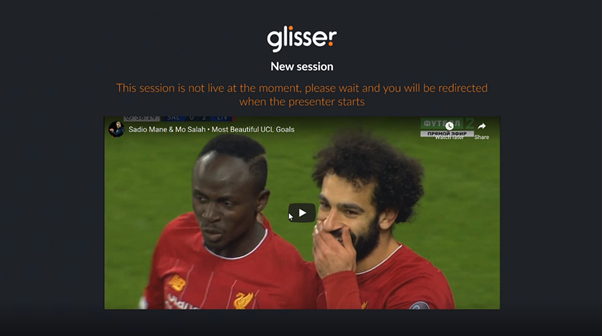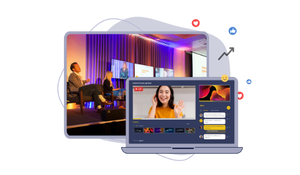I just ran a hybrid event. A fully fledged multi-hub hybrid event with in-person hubs in New York and London as well as just under a thousand online too. And it was an indisputable success.
I didn’t do this alone of course, there was a power house of partners and team members collaborating to make this the huge success that it was. More on them below.
It was called Hybrid Events Ignited (HEI) and here are the top 8 lessons that we learnt on this epic journey.
1. Each audience matters – plan for each of them to have a first class experience.
With HEI we had three audiences, simultaneously connected, in New York, London, and online. As an event organizer, you must plan your entire project to deliver to each of your hybrid audiences, as each will have different success factors.
We learnt that allocating a different person to be accountable for the experience of each of our three audiences lead to the best possible experience for each of them.
2. Production values really, really matter.
Your production company should be an extension of your team, they need to understand your goals and your hybrid event platform and then connect the two. You need them to help you push your platform to drive success, not limit it to avoid risk. We were supported by NMR Events in New York and Encore in London, both of whom did exactly this – they kept pushing for greatness and helped us use our platform to achieve our hybrid event goals.
3. The power of a moderator!
We used the brilliant Samme Allen and her role was to create the best experience for each of the three audiences, which she did with aplomb. Your moderator needs to be able to engage both those in the room, and those online with a TV presenter-style approach. Engaging both types of attendee simultaneously is a true skill and the average event chairperson will not be trained for this. If you want wow factor, use a professional emcee.
4. Audiences need to have an individual and collective experience and both your platform and production crew should enable this.
Using production, we enabled the two in-person audiences to see one another from time to time during the event (but not throughout as we felt this would be a distraction).
We also showed the in-person audiences to the online viewers at times as well.
We used the Glisser platform to enable each audience to interact with the event content, wherever they were, in the same way and at the same time. The platform instantly combined all of their interactions into one collective audience response which enabled our content to remain relevant to all attendees, at all times. There are very few platforms that can instantly do this in synchrony, with all audience members interacting in the same way simultaneously, so it was fantastic to see it in action.
Keep in mind too that this is the only way the moderator can realistically get all attendees (wherever they are) to engage in the event. They need to be able to give one set of super simple instructions to all – you can’t expect a moderator to be telling in-person attendees to do one thing and online attendees to do something else! That’s just not practical.
The photo booth was another good example of an individual and yet collective event experience – Noonah powered this – and it enabled the attendees to send in individual selfies that were collated into a selfie wall of ALL participants, wherever they were. This could be viewed at any time by all audience members and we specifically pulled it into the event agenda periodically too.
To learn more about planning a multi-hub hybrid event download your copy of the full case study on Hybrid Events Ignited, or book a Glisser walkthrough.
5. Don’t try to make everything like- for-like for all attendees.
Keep it relevant for each audience group. We had some activities only for those in the room – e.g. in New York we had a ‘Breakfast at Tiffany’s’ prize draw giveaway and this involved the New York attendees opening personal gift boxes and one person finding a Tiffany necklace inside – the London attendees watched all of this happen live on the screens in the London venue and burst into rounds of applause when the winning attendee held up the necklace.
It was amazing to see the London audience watch the New York audience participate in an independent activity and still feel involved in it.
We also had stand-alone activities for the online attendees that we didn’t expect the in room attendees to participate in, like topic networking online in round table groups, the chance to experience some augmented reality tech, and mini brain break sessions. Keeping the core sessions collective, but the extras tailored to specific audiences really helped to keep everyone engaged.
6. Stage set up is everything.
This caused a few last minute adjustments and is one of the few things I would do differently next time. Who is sitting where, facing which direction and able to see who else is extremely important when you have presenters dialling in from all over the world, and physically present in different locations. We created a crescent shaped ‘monitor forest’ as we felt this was the easiest way for all in-person and online panellists to communicate seamlessly with one another.
This worked well after trialling various iterations of the screens and presenters that were actually in the room, so that all presenters were looking in the right direction. This seems like a small point, but it’s a huge factor in enabling the presenters to have a really great experience when presenting, which is always going to mean happier attendees. In hindsight, I would have tried to make it easier for our New York Sub-Moderator – Naomi Clare Crellin – to have been able to see everybody more easily – a great lesson learned!
7. Get a great venue.
Top end wifi is an obvious essential. We always aim for 10mbps per 100 attendees in the room, and then allow for video with 100mbps on top. Beyond that, a venue who embraces the power of hybrid and sees it as part of the future of the event sector will likely have some hybrid experience themselves and be able to provide invaluable advice. We were fortunate to be in etc.venues who were 100% supportive for both the New York and London venues.
8. Go big or go home.
We went all out for a very complex and ambitious multi-hub hybrid event to demonstrate how to do it and that it’s actually possible - and we succeeded in our goal. I’m so pleased we aimed so high as it was a great experience for all as a result. I would definitely NOT recommend just dipping your toe in the water with hybrid – it’s all or nothing if you want all audiences to have a great experience.
We’ve got more case study content coming soon, this is just the initial learnings list – a lot more practical and tactical content still to come.
Watch this short video for a round up of all the action from the day.
Vanessa is an established virtual and hybrid event professional experienced in building engaged digital communities and delivering high-quality digital content and training.
Having run her first virtual event in 2012, Vanessa has been immersed in and witnessed the scope, landscape and potential of events, training and digital content evolve. Now, as an essential part of today’s business world; she has made it her mission to facilitate event organisers, training companies and digital content providers to navigate the rapidly evolving world of virtual opportunities.
In her role as Chief Evangelist at Glisser, Vanessa is demystifying the tech that can help trainers and event organisers breathe fresh life into their work.






.png)
.png)
